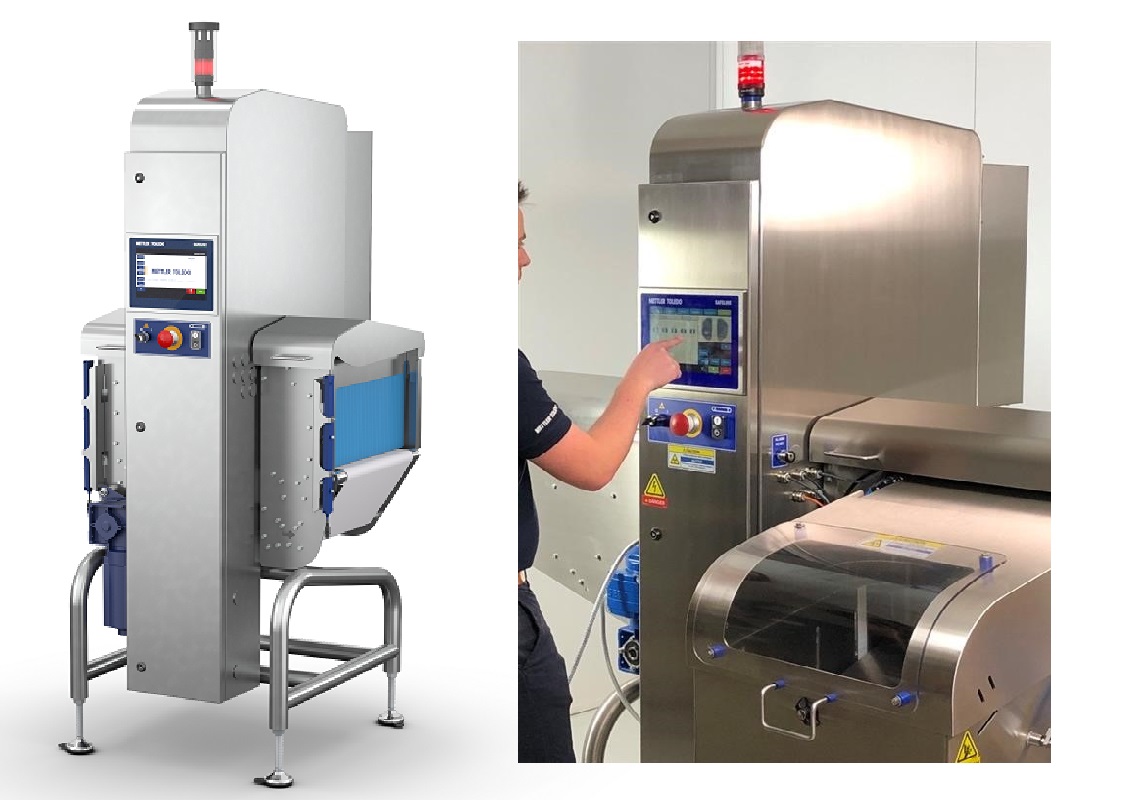CONSTANT innovations over the years have advanced food inspection technologies, machines and standards, raising the performance, reliability and safety of inspection equipment to ensure products are free of contaminants. X-ray technology and equipment for food and beverage product inspection, for instance, besides having adapted to the requirements of food production environments have become easier to use, cost-efficient and accessible.
As automation and digitalisation further enhance both hardware and software capabilities and boost overall machine performance, food inspection will be much simpler and more reliable.
Mettler Toledo Product Inspection, a leading global supplier of analytical precision instruments and services, knows only too well the importance of keeping pace with, if not being a page ahead of, technologies to remain relevant in a fast-moving industry such as food and beverage. With its products and solutions used in industrial applications and businesses and designed to meet requirements in product inspection, R&D, quality control and process analytics and thousands of patents and trademarks in various technical innovations, the company’s commitment to innovation enables it to help manufacturers gain an edge in a highly competitive market.
X-ray technology for food inspection has been around for decades, admits Niall McRory, global key account manager for Mettler Toledo. “But advancements in technology have put X-ray in a much better position to help companies with their food quality and safety objectives,” he says.

Niall McRory, global key account manager, Mettler Toledo
“In my two decades of working in X-ray, I’ve seen exponential growth. When I first started out, X-ray was costly and was the size of a large room. It was very complex to operate. But innovations over the years have made it easy to use. Also, we are now at a stage where X-ray has come down in price that makes it very affordable,” says McRory.
Mettler Toledo notes the combination of enhanced inspection capabilities and accessible price points pushes up growth in the market for X-ray.

New Xray equipment: The X34 series features a 0.4mm detector, optimum power generator and intelligent software for greater detection sensitivity with low false reject rates.
X-ray equipment pack 0.4mm detectors, advanced software
The latest machines from Mettler Toledo have 0.4mm detectors. These can automatically select the best par level with just a a few packs pass and will set up more than 30 inspection algorithms fully automatically.
How are these beneficial to manufacturers? McRory explains, “It allows for greater line availability so it saves a great amount of time and reduces the total cost of ownership. Further, it lowers potential operator error. Whereas before an operator has to manually adjust settings, with the machine now fully automated and optimised, a check can be done with the press of a button.”
In companies that experience high changeover of staff on the production line, this can translate to greater savings for manufacturers.
The company’s X34 series, one of its newest designs, features a 0.4mm detector, optimum power generator and intelligent software for greater detection sensitivity with low false reject rates. It can detect metal, glass, mineral stone, calcified bone and high-density rubbers and supports all types of packaging.
With its automated setup, the X-ray machine offers an easy-to-use interface that makes operation less complicated and reduces the chances of programming errors. This also makes product changeovers much easier. Further, the enhanced software detects contaminants whilst doing quality and packaging integrity checks, enabling the machine to do multiple inspections simultaneously. The lower energy consumption by the low-powered generator also helps reduce costs.
The X34 can be set up to perform regular checks. For example at a specified time interval it will indicate on the screen that a test is required, reminding the operator to run a test, ensuring continued food safety.
“This is just one example of how we improve the quality and automation and it also links really nicely with digitalisation efforts. The beauty of X34 is that everything is captured on the machine; everything is recorded. All data is stored with date and time stamp, and they cannot be tampered with nor adjusted.”
Metal detectors feature multiple frequencies
Mettler Toledo’s Profile Advantage Metal Detector, one of its latest products in this category, marks a breakthrough in Multi-Simultaneous Frequency technology and Product Signal Suppression to ensure greater sensitivity in challenging applications such as wet, hot, chilled and cooling products or those packed using metallised film. With 50 percent greater sensitivity, the Profile Advantage can detect the smallest metal contaminants in food such as bakery, meat, poultry, seafood, ready meal and dairy products.
The Profile Advantage has maximum sensitivity for ferrous, nonferrous and stainless steel metals. It can store up to 100 product names with rapid recall. The single-setting operation with intuitive clustering makes it easy to use while the modular design allows for future enhancements, thereby lowering the cost of ownership.
As the Profile Advantage can support multiple frequencies, it works particularly well for products with a high product signal. “One example could be a bag of frozen fruit. If the production line stops even for just 30 or 40 seconds, the temperature and moisture of the product can greatly change and this can cause false rejects on the metal detector. The Profile Advantage ensures zero false triggering, which helps with the productivity without compromising the level of detection.”
Working around technology limitations
With X-ray machines, the limitation is not so much the application but more the detector or diode size. Mettler Toledo’s equipment can detect down to 0.4mm in many applications.
“Most food manufacturers and retailers and even global standards, however, only expect to detect 1mm or 0.8mm. In fact, many would say that anything below 1mm or 0.8mm will actually pass through the digestive system completely undetected. So, it’s basically been a benchmark for quite some time that at 0.8mm or even 1mm is already a good level of detection for foreign bodies,” according to McRory.
For its metal detectors, Mettler Toledo’s products can detect down to 1mm for ferrous metals. “The metal detector sees ferrous, nonferrous and stainless steel metals at different levels because they have different levels of conductivity. A very dry product would obviously yield great results compared with the bag of frozen fruit or a large piece of meat with a high conductivity level,” McRory said.
To further improve quality and reliability and simplify the process for manufacturers, Mettler Toledo’s metal detectors and checkweighers have a feature called PVR or performance verification routine. This basically means the integrated software in the machine will actually check that the quality people on the production line are making the checks on the machines.
“What we’ve done is automate the process. From a quality aspect, this helps ensure that a metal detector or an X-ray is performing to a certain level of detection,” McRory said.
Mettler Toledo’s monitoring and data capture tool, the ProdX quality management software, delivers full digital track and trace with real-time food safety compliance also. It can gather data from the attached product inspection device and send back all information to the host PC.
The ProdX’s open platform communication enables easy access to data and overall transparency. All data can then be uploaded into the MES or even the blockchain for greater efficiency.
While the detection capability can vary depending on the application and product, Mettler Toledo lets customers see for themselves how the equipment would perform with its Test Before You Invest program. This lets customers send products for testing and get a detailed test report.
“We have four global test centres with one being based in Malaysia with a wide range of machines where we can test all our customers' products. We give them a detailed test report and they can make a full evaluation in advance of what the machine is able to do,” says McRory.
Food inspection tighter to ensure food quality, safety
McRory noted that with global standards such as IFS and BRCGS in place, inspection and food safety practices have become much easier to implement. Food processors have standards they can follow as opposed to many years ago when companies were left to their own devices in terms of checking products.
“Nowadays, safety and quality breaches may not actually be the fact that a piece of metal is found in the pack but that someone deviated from the process and so a lapse occurred,” he discloses.
With continued innovations, in particular digital technologies, improving product inspection and enabling transparency and traceability, food inspection is expected to improve further and become more straightforward, even for smaller manufacturers.
Many manufacturers have a 5-year plan for digital transformation, which includes converting factories to full automation with the machines communicating back to a host PC, according to McRory.
“From a product inspection perspective, we've been monitoring the digitalisation trend for the last 10 years and have been aware of its potential. This is why all of our machines are compatible with most protocols that are built-in typically OPC UA. We can also use Ethernet.”
“Companies are at different levels in their digital journey depending the infrastructure that they have. Some companies are very advanced in both hardware and software while others don’t even have Ethernet in the factory. For some companies, it’s a big challenge because the investment can be quite big,” McRory shares.
Proof of Mettler Toledo’s commitment to further elevating its food inspection technology and capability is its UK-based Global Centre of Excellence for X-ray, launched in October 2021.
With an overall footprint of 4,843sqm and an X-ray equipment assembly area of 2,102sqm, this new facility will increase the company’s UK manufacturing capability for X-ray inspection technologies by more than 80%. It will also reduce lead times for x-ray inspection solutions, optimise flow lines and increase warehouse capacity by 50%.
Besides R&D, the centre will handle manufacturing, logistics, final quality testing and repair functions for Mettler-Toledo Safeline x-ray inspection systems.
“The huge investment is because Mettler Toledo sees great potential for the future. The new factory allows us to have all our R&D under one roof now. Obviously, the increased capacity brings many more benefits. We’re reducing our lead times and we're just so much more efficient and lean in the way we do our business,” McRory concludes.














